Restoring the Cumberland Plain in north western Sydney – AABR Walk and Talk
Xuela Sledge, Project Manager,
Cumberland Plain Restoration Program – Greater Sydney Landcare
Greater Sydney Landcare and NSW National Parks and Wildlife have teamed up with several other partners to coordinate the Cumberland Plain Restoration Program (CPRP). This is a Saving our Species program, with funding administered by the NSW Environmental Trust. Approximately $350,000 will be fed into the restoration of seven sites across the Cumberland Plain, four on Park estate; two on Council land; and one on private land.
The Cumberland Plain, is a biogeographic region in NSW, which is a relatively flat region west of Sydney CBD and east of the Blue Mountains. Cumberland Plain Woodland is one of a number of plant communities found.
The CPRP also includes community engagement and awareness raising as an objective, and on September 24th 2022, AABR held, as one of its calendar events, a trip to one of the program’s sites. The site is known as ‘Sittella’, after the bird, the varied sittella, which is known to frequent the site. The varied sittella is listed as a vulnerable species in NSW and inhabits much of mainland south east Australia – except the arid areas.
Work at the Sittella site – not just weed control
The Sittella site (Pic) sits within Scheyville National Park, which is the largest remaining patch of Cumberland Plain Woodland left. Like the sittella, Cumberland Plain Woodland is also listed as threatened, specifically as an Endangered Ecological Community (NSW) and as Critically Endangered Ecological Community (Federal). Scheyville is located in the northwest of Sydney, towards Windsor, and is pronounced ‘Sky-vill’.
Scheyville was once agricultural land, a site for immigrant camps after the Second World War, an officer training school during the Vietnam War, and a place for recreation until established as a National Park in 1996. Consequently, it has had a lot of disturbance and is lacking old growth trees. In light of this it has many weed problems, and one of those weeds is a native acting like a weed – Bursaria spinosa (blackthorn).
Blackthorn is a fantastic habitat shrub for small bird habitat, but in the absence of fire can dominate and close what is meant to be a ‘woodland’. Cumberland Plain Woodland typically comprises an open tree canopy of older trees with open space in between them. This provides opportunities for woodland birds to go between the canopy and the ground for refuge and ample grassy ground covers, respectively. African olive and lantana also thrive in this environment, and behave similarly to blackthorn, compounding the closure of the woodland and limiting the diversity of the ground layer.
‘Closing’ a woodland environment has many implications, including limited native recruitment for native forbs and grasses, and a lack of passageway for herbivores who may otherwise promote the growth of these via browsing. As such, Sittella has been earmarked in the CPRP to have intervening methods of restoration to encourage a more open/woodland environment to return.
Participants on the AABR walk and talk saw the site where different methodologies have been used – an attempted ecological burn, trittering, and weed control.
In late 2020 an ecological burn was attempted at Sittella. With the best attempts from NPWS, including a helicopter hosing fire from the sky onto site, but it did not burn. The bursaria would not catch alight, presumably due to the large amount of air underneath the shrub. In light of this, the site was subject to trittering in 2021, in order to clear away the blackthorn, and leave it on site as vegetation waste that may add to the fuel load to put a second ecological burn through.
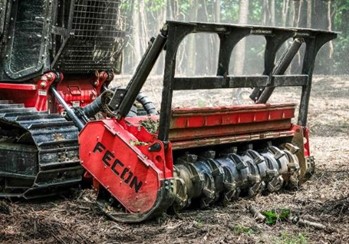 A tritterer is a large ‘forest mulcher’ (see image ; note this is not a photo of the machinery used, rather similar only). It can clear thick shrubs and small trees without any trouble. It is hardly a piece of equipment one may think of to be included in the ‘bush regeneration’ field, but when dealing with large areas within National Park, it is sometimes needed.
A tritterer is a large ‘forest mulcher’ (see image ; note this is not a photo of the machinery used, rather similar only). It can clear thick shrubs and small trees without any trouble. It is hardly a piece of equipment one may think of to be included in the ‘bush regeneration’ field, but when dealing with large areas within National Park, it is sometimes needed.
Unfortunately, the destruction involved in the trittering process – which opened up the soil to light – encouraged lantana to return to a level not present prior to the trittering intervention.
This meant we had to then intervene with traditional weed control works of cutting and painting the lantana, which has been costly and requires follow up.
However, the battle is being won. Prior to the eco burn attempt which was the first stage of restoration in this program at Sittella, there were limited native grasses on site. Now native grasses are thriving, and the regeneration of native forbs is improving all the time. All of a sudden, we are in control of the weeds on site, and we have an active program to keep on top of the dominating weedy shrub layer – be it blackthorn or lantana.
The second aspect to returning this site to a woodland involved the thinning of the common eucalypt saplings. This is thought to make space and let light in to allow the larger trees on site to be able to grow out, as well as up, so that they mature into wider older trees that will become habitat sooner with hollow creation etc. With the competition in re-growth Cumberland Plain sites, there is little to no opportunity for hollow creation as the trees simply go up and not out.
Addition of habitat components
Although not at Sittella, nor Scheyville National Park, we have also intervened with the creation of habitat through the distribution of course woody debris. These are essentially large limbs and root masses that were stockpiled after clear felling a large ex-defence woodland remnant (for the suburbs of Jordan Springs and Ropes Crossing). Through the clever and efficient work of the Cumberland Area NSW National Parks and Wildlife Service (NPWS) approximately three hundred tonnes were moved around the nearby Wianamatta Regional Park.
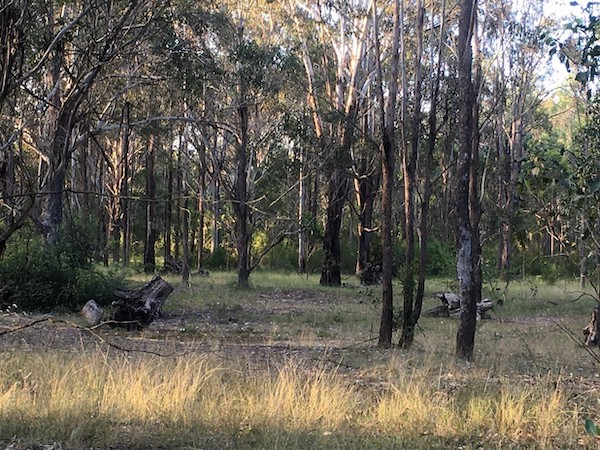 Root masses – examples of coarse woody debris returned to Wianamatta RP.
Root masses – examples of coarse woody debris returned to Wianamatta RP.
Logs and large root masses as habitat may not have been on the Cumberland Plain before Europeans, as the traditional owners of the land kept it burnt and free of debris on the ground. During the time before Europeans arrived, the Cumberland Plain and the rest of the country had instead a plethora of old growth trees that were full of hollow, limb and bark habitats. Coarse woody debris substitutes these habitat structures which safely house reptiles, small mammals, birds and amphibians. Our re-growth trees are still too young to provide this habitat. Until the time when young trees grow up into older and elder ones, we must re-create the absent habitats that have disappeared with loss due to housing, agriculture and industry.
Weed control, thinning, habitat creation and education about the vegetation communities on the Cumberland Plain will go a long way towards recovering the native vegetation and the endemic western Sydney species of plants and animals that are still hanging in there. Some of these species can be seen in the bird species, which are monitored by Bushcare volunteers who also carry out bush regeneration at Sittella.
Community Involvement
Although unnamed at this time, a strong group of volunteers, often not the same each month, attend Birding and Bushcare at Sittella on the 4th Saturday of each month in the morning. The volunteers are guided through an early morning bird walk and talk, followed by a catered brunch, and a few hours of weeding. A bird list is being compiled through the guidance of bird expert Mark Fuller (from Avianation), at these B&B events. The objective of this is to determine whether a swing from a closed system to a more open woodland environment is encouraging back the woodland bird species.
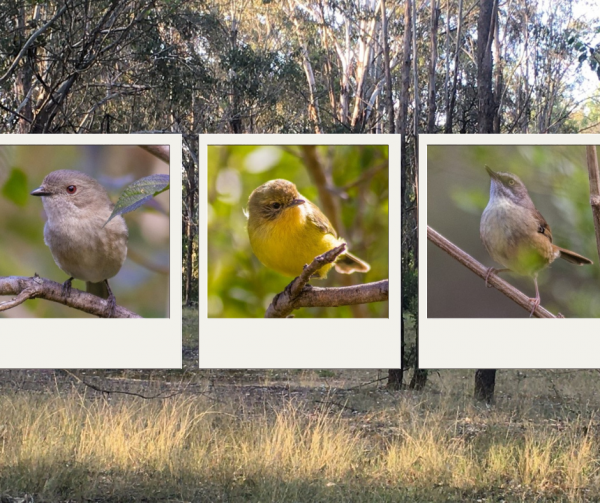 Right: Here are some typical woodland bird species at Sittella, with photos by Avianation: From left to right Golden Whistler, Yellow Thornbill and White browed scrub wren.
Right: Here are some typical woodland bird species at Sittella, with photos by Avianation: From left to right Golden Whistler, Yellow Thornbill and White browed scrub wren.
The CPRP also currently takes a regular group of community volunteers spotlighting in the Jordan Springs side of Wianamatta Regional Park. This side of the reserve is still young and is recovering from past clearing. It has some larger older trees that follow the trend of African olive suffocating their base. Olive is a super weed (not superhero; but super strong) that has taken over many parts of the Cumberland Plain Woodland in southwest Sydney. We cannot afford to let this happen on the northern end of CPW as well. Otherwise, it could affect recovery.
We need many more hands – as the Landcare phrase goes – ‘to make light work’. We have plans to try to develop a corporate volunteer bush regeneration program at the Sittella Bushcare site as it is flat, has easy access and is really easy in terms of weed control requirements. We could keep targeting lantana across the whole site, and then come back and start again with follow up. This could also bring in some funding, which could be put back into restoration on this – and other – sites on the Cumberland Plain and to continue the CPRP.
We also need the backing of decision makers everywhere. There still is endemic, native and ‘wild’ life left in western Sydney and it is well and truly worthy of recovery and to grow as a resilient and fecund community of life across many tenures.
If you have the opportunity, come and back Western Sydney’s natural environment as a contrast to the abundant (and no less beautiful) greener suburbs in Sydney’s north, south and east. Travel west for a day and pick up a tool belt with us. We can offer you a birding morning – or an evening of frog calls and mammal watching – plus an opportunity to get your hands dirty!
More information
The Cumberland Plain Restoration Program is a Saving our Species project that has support from the NSW State Government through the Environmental Trust.
For more information on the project and how you can help go to https://greatersydneylandcare.org/landcare-sos-cumberland-plain-restoration-program/
Contact the Landcare SOS Project Officer for the CPRP xuela.sledge@greatersydneylandcare.org. .

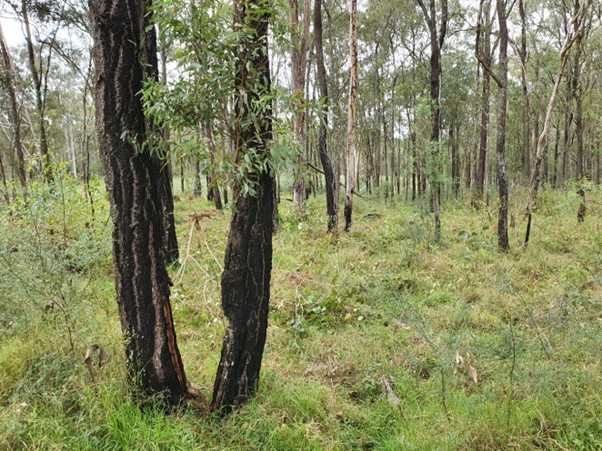


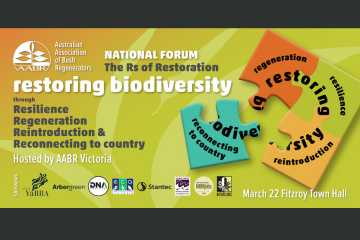
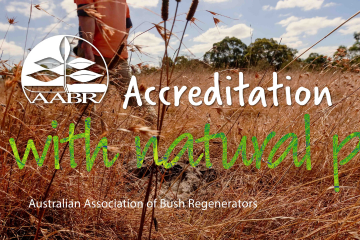
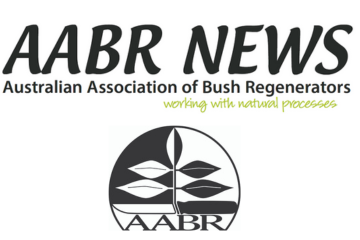
Leave A Comment